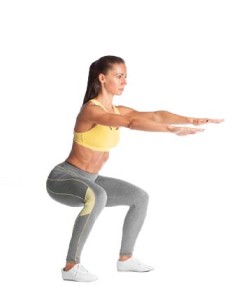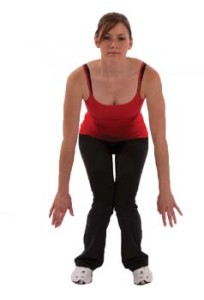SQUAT FOR THE NEW YEAR

by Paula Allia
PT, DHSc, MTC, OCS
As millions of Americans exercise each day, January is the month that historically has the most gym memberships. Finding the right place to assist you in your needs is essential in order for you to follow through and keep your New Year’s resolution. We, at Fitness Together, focus on using body weight to strengthen muscles, execute power, and assist you in both everyday functional activities and in improved performance with various sporting activities. Our combination of certified trainers and an experienced physical therapist is a key component to the best execution.
One of the most common exercises for the legs is the squat but why is it used so frequently and what are the proper techniques that should be followed in order to avoid bad technique and injury?
The typical injury that occurs in the body is the knee. Some people already have knee conditions so it is important to find that right position to use and this may vary depending upon the range of motion and joint angles of the hip, knee or ankle. Remember, the body is one kinetic chain and actions at one joint affect the others.

Correct Squat Postion

Incorrect Squat Position
The squat is an exercise that strengthens the hip, knee, and ankle. It is a closed chain exercise which means that the foot is fixed to the ground. If there are any weaknesses in the muscles that properly activate then abnormal movement patterns occur. Over time, these abnormal movements can cause excess strain to the muscles but also to the joint structures involved. Did you ever think why so many active people have so much arthritis? It very well may be due to abnormal wear and tear over the years of not performing with quality. Quantity without quality in exercise repetitions can break you down. Corrections of techniques can help you avoid or lessen the affects of poor execution.
Typically it is known that the quadriceps in the anterior thigh work significantly in the squat at the knee. It is of utmost importance when bending and rising that the knee does not pass in front of the foot. If it does there is an increased torque on the knee. The exercise in both directions should be done in a controlled manner because there is a strengthening component in both phases. In addition, the gluteal muscles work to control the hip component of this exercise.
The knee should not turn inward. When the leg falls inward there is a lot of internal rotation at the hips. This places undue stress on the medial aspect of the knee and the gluteal muscle on the side of the buttocks (gluteus medius) is stretched and many times is less active than it should be. Thus there is weakness in the hip abductor or rotator muscles or when the firing pattern of the quadriceps is not working correctly.
There can be so many contributing factors to not performing an activity correctly. One is simply not knowing what is the right way. Next, one may have malalignment of a joint to begin with and finally, bad habits over the years cause one to take the path of least resistance and that is not always the safest route.
It is time to take a stand for your own health. Participate in exercise of some sort daily. Incorporate a combination of cardio, strength, and endurance training and incorporate your body weight into the activities. Properly support your weight in a safe way for your bones and muscles. Then progress safely as your body is ready. Give your body a push start to exercising today and find the right trainer or therapist to help, even if it is only for a couple of sessions to get you on the right track.

Leave a Reply
Want to join the discussion?Feel free to contribute!